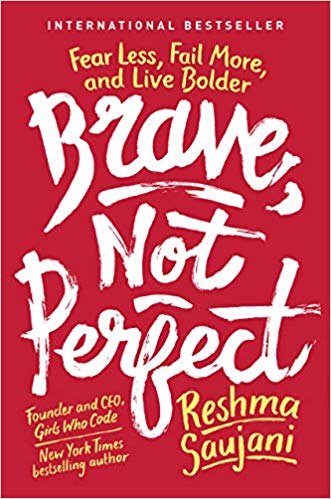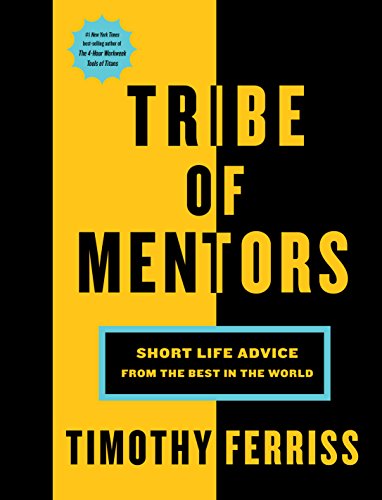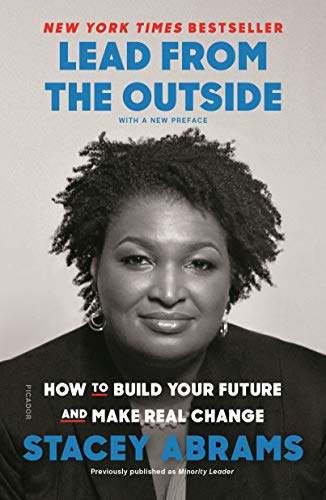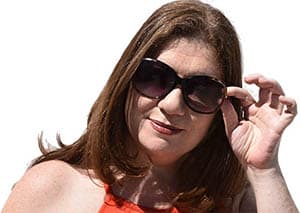If you fear rejection, you’re not alone. The problem is, your fear of rejection holds you back. It makes you hesitate before you write a pitch. It’s the voice in your head telling you that no one wants to read your story anyway. Thus you resist doing the work that needs to be done if you want to design a writing life and create work and words of value.
“Everyone who has a body experiences Resistance,” says Stephen Pressfield in his book The War of Art. This means every single person who sits down to write, to build a business plan, to ask for a blurb on their latest book, encounters resistance.
Thankfully, there’s a large body of research, philosophy, and advice surrounding resistance and rejection. Instead of allowing rejection to stop you, here are eight books that will help you break through your fear of rejection and do the work you’ve always wanted to do.
Atomic Habits by James Clear
In Atomic Habits, James Clear suggests we stop trying to motivate ourselves and set goals. That’s not what gets us where we want to go. What really counts are the tiny actions you take every single day that matter.
Goals don’t matter unless you have a path to get there. Your atomic, everyday habits create that path. Writing a book is made of sitting in front of your computer hundreds of times. Becoming a better guitar player requires endless plucking at your instrument. But with each strum and every word, you bring yourself closer to your end goal.
Clear even argues that not having a goal wouldn’t matter, because as long as your habits reflect your beliefs, the tiny tweaks you make along the way will get you to your end goal whether or not you intended to get there.
It’s so easy to overestimate the importance of one defining moment and underestimate the value of making small improvements on a daily basis. Too often, we convince ourselves that massive success requires massive action. Whether it is losing weight, building businesses, writing a book, winning a championship or achieving any other goal, we put pressure on ourselves to make some earth-shattering improvement that everyone will talk about.
Meanwhile, improving by 1 percent isn’t particularly notable — sometimes it isn’t even noticeable — but it can be far more meaningful, especially in the long run. The difference a tiny improvement can make over time is astounding. Here’s how the math works out: If you can get 1 percent better each day for one year you’ll end up thirty-seven times better by the time you’re done. Conversely, if you get one percent worse each day for one year, you’ll decline nearly down to zero. What starts as a small win or a minor setback accumulates into something much more.
Brave Not Perfect by Reshma Saujani

Brave Not Perfect encourages women and girls to take risks instead of trying to be perfect. Perfection leaves us miserable. Risks aren’t always pleasant, but what we stand to gain outweighs the bad by a large margin.
Being a go-getter and being gutsy aren’t necessarily the same thing. It was the drive to cultivate the perfect resume that got me into Yale Law School after being rejected by them a whopping three times, not bravery. It wasn’t genuine passion for the law or big business that compelled me to go after a job at a top-five law firm and then a premier financial assets management firm, it was the desire to please my immigrant father and fulfill his dreams for me. I made all these choices to build the ‘perfect me’ because I believed that would lead to the perfect life.
The Dip by Seth Godin
The Dip short book packs power in its pages.
The Dip is the space between beginner’s luck and becoming an expert. Everyone wants to quit, Seth says. That’s a normal part of the process. Sometimes, there are good reasons to quit, but too often people want to quit because it’s just hard and unpleasant to continue. The Dip helps us navigate when it’s best to pack it and when it makes more sense to persevere.
The seduction of not quitting — and the source of all those stories about sticking it out — almost always comes from people moving through a market. When you hear about an author who got turned down thirty times before signing with a publisher or of an overnight sensation who paid her dues for a decade in coffee shops, you’re seeing how persistence pays off across a market.
On the other hand, when was the last time you heard about someone who stuck with a dead-end job or a dead-end sales prospect or a dead-end relationships until suddenly one day, the person at the other end said, ‘Wow, I really admire your persistence; let’s change our relationship for the better’? It doesn’t happen.
Rejection Proof by Jia Jiang
Rejection Proof begins with Jia Jiang dressed in full soccer gear walking through some random neighborhood in search of a house with a backyard. He wanted to ask them if he could film himself playing ball. Imagine opening the door to someone requesting what he wanted? Would you say yes?
So he repeatedly set himself up for failure and rejection to teach us all how to better manage rejection.
Why is it worth getting over rejection? Jiang tells us what happened to him when he didn’t follow a dream of making shoes that turn into skates.
I rejected my own ideas before they could be rejected by the world. Giving up at the first sign of rejection felt much safer than putting my idea out there to be further criticized. It was so much easier to do the rejecting all by myself. But every time I saw kids skating on Heelys in malls, sidewalks and playgrounds, every time I read an article about Adams turning his childhood passion into a pop-culture craze, I thought about what could have been. The pain and regret were unbearable.
Tribe of Mentors by Tim Ferriss

Questions like:
- What is the book (or books) you’ve given most as a gift and why?
- How has failure or apparent failure, set you up for later success? Do you have a “favorite failure”?
- Eleven questions in total. The answers he received became a book.
What inspired me most about Tribe of Mentors was Ferriss’ ability to go out and make the ask. Over and over.
And that is exactly what you need to do when you’re facing rejection. Half of the people he wrote said no or didn’t respond at all, it would have been easy to get discouraged and give up. But he never gave in to the fears of not being wanted and not being good enough. Instead, he continued until he finished his book.
The ‘easy’ path took thousands of back and forth emails and Twitter direct messages, hundreds of phone calls, many marathons at a treadmill desk and more than a few bottles of wine during late-night writing sessions, but… it worked. Did it always work? No. I didn’t get the Dalai Lama (this time), and at least half of the people on my list didn’t respond or declined the invitation. But it worked enough to matter, and that’s what matters.
Mindset by Carol Dweck
Carol Dweck writes about two kinds of ways of seeing the world in her book Mindset: The New Psychology of Success. A fixed mindset. One that believes you’re born with your talents and abilities as is. They don’t change or grow. What you are is what you get. A pretty dismal way to look at ourselves, isn’t it?
And then there’s the “yet” mindset. Where you believe in growth and learning as you go. If you can’t do something now, you can if you work toward it. You learn using strategy and resilience. The “power of yet” guides us to create what we want for the future instead of only focusing on what’s possible now. When rejection and failure hit you, the yet mindset helps you keep going in the face of rejection, because you see it as a challenge to be met and overcome.
Check out this talk she gave discussing how “yet” works
The War of Art by Stephen Pressfield
Stephen Pressfield coined the term “Resistance” in The War of Art to describe the awful feeling you get right before you start working. It gums up the machine and makes it hard to sit your butt-in-chair and actually do anything. It gets in the way of our work.
And by work, I mean that big fat scary project you’ve always wanted to do. The one that comes from your soul. Your life’s work. But it’s so much easier to hold back and let excuses take over. Or numb yourself out with social media and other distractions.
Pressfield describes the nature of our resistance as something perpetual. All of us experience, and we’ll wrestle with it every time we sit down to work. It never fully goes away, but you must push through — ignoring failure and rejection — and do the work anyway. It gets easier the more you do it.
Most of us have two lives. The life we live and the unlived life within us. Between the two stands resistance.
Every sun casts a shadow and genius shadow is resistance. As powerful as is our soul’s call to realization, so potent are the forms of Resistance arrayed against it. We’re not alone if we’ve been mowed down by Resistance, millions of good men and women have bitten the dust before us. And here’s the biggest bitch: We don’t even know what hit us. I never did.
Lead from the Outside by Stacey Abrams

Watching her run for governor inspired me greatly. The race was stacked against Abrams from the beginning. She was a Democrat running in a red state. The general consensus was that “Georgia’s not ready for a black woman.” To complicate things, her opponent was the current GA Secretary of State whose job it was to outline rules for the election. She was the ultimate outsider in every way.
But she faced it and with such incredible planning and dignity. She lost the race, though she fought hard, and the day after she launched Fair Fight Georgia to fight for voters’ rights.
She took impossible odds and took a leadership position nonetheless.
Conditioning doesn’t just happen to us — it happens around us, touching everyone and everything. We learn not to want, not to expect because we’re trained not to see ourselves as more than what we’ve been told to be. Thus, fear becomes as familiar as air, an automatic caution against bucking the system.
The words aren’t often spoken in polite company, but the reality becomes reinforced every time we see power in action, and it looks nothing like us. Fear is instinctive, but it is also a learned response. When we see leadership denied because the person reaching for more doesn’t look the part of is too different from who has become before, the apprehension makes complete sense.

